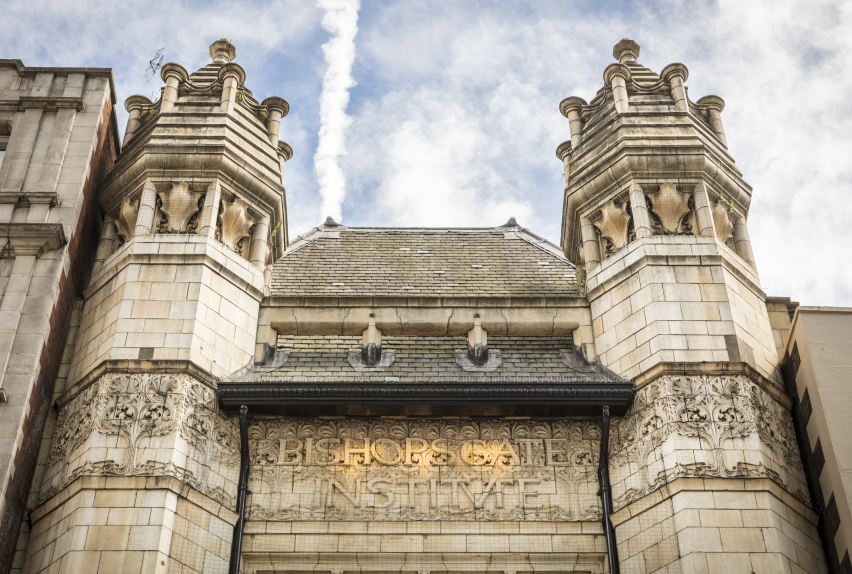Woodroffe Journals copy
In August 2008, while checking through some boxes in the Raphael Samuel Archive, our archivist, Stefan Dickers, discovered two non-descript volumes.
On opening the volumes we were amazed to discover daily handwritten notes about people suffering from many different medical conditions and abbreviations such as 'A.D.L' or 'M.A.B.Y.S'.
Luckily, one volume included an inscription: 'Father Woodroffe's Journals, January 6th 1890 to August 18th 1892. Repaired to the best of my ability, for Father Rowe in appreciation. November 2nd 1968, Graham Scott'.
Who was Father Woodroffe?
St. Matthew's Church, Bethnal GreenJames Joseph Woodroffe was educated at Trinity College, Dublin and became a priest in 1878. After working as a Curate in Ireland, he moved to England.
He worked at Holy Trinity Church, Bromley Common (south east London) between 1886-1888 before moving to St Matthew, Bethnal Green in 1888.
The Rector of St Matthew's at that time was Septimus Hansard, who despite leading campaigns to improve conditions in Bethnal Green and being instrumental in the setting up of the Bethnal Green Museum, chose to live in Kensington because of his 'love of clean air'.
As Curate, Woodroffe was responsible for the social and physical health of his parishioners as well as their spiritual improvement. Woodroffe worked at St Matthew's for eight years before moving to St Saviour, Fitzroy Square, in 1896.
What was he recording?
Bethnal Green was one of the poorest areas of East London in the 19th century. The parish was created out of Stepney parish in 1743 to serve the expanding population of silk weavers and labourers moving north from Spitalfields. However, the collapse of the English silk weaving industry in the early 19th century meant that many of Woodroffe's parishoners were unemployed and reliant on charity.
One movement to improve the conditions of the working classes across London was the Charity Organisation Society (COS). Founded in 1869, the COS aimed to increase cooperation amongst charities and to organise charitable giving.
One of Woodroffe's roles was to write letters of recommendation for his parishioners to the COS and other charitable organisations - such as the Queen Adelaide Dispensary set up in Bethnal Green in 1850.
In 1896 there were 8,653 people living in the parish. Although the parish did not include the concentration of 'blackest streets' of the notorious Old Nichol slum, in Booth's 1889 descriptive map of the East End poverty most streets surrounding the Church are coloured blue or purple indicating 'very poor' or 'ordinary poverty'.
In addition to the lists of applicants for medical help, there are comments on the moral character of the applicants, requests for legal or spiritual help, other types of charitable support, Church business and events in the parish.
What are the abbreviations?
Woodroffe used many abbreviations in his notes, we have identified 'M.A.B.Y.S' as the Metropolitan Association for Befriending Young Servants, 'C.O.S' as Charity Organisation Society, 'A.D.L' as Adelaide Dispensary Letter, and 'L.H.L' as London Hospital Letter.
Is it Woodroffe?
The journals start in May 1887 although we know Woodroffe became Curate in 1888. There are at least three or four different styles of handwriting in the journals and, especially in the early sections, comments added about applicants indicating whether a decision has been granted. We don't know who wrote these other comments, or even whether the main hand really is Woodroffe.
The journals
The original two volumes run 25 May 1887 to 4 January 1890 and 6 January 1890 to 18 August 1892. To reduce file size and optimise viewing we have split the volumes into approximately half-year sections. Each volume also has an index which is available below.
